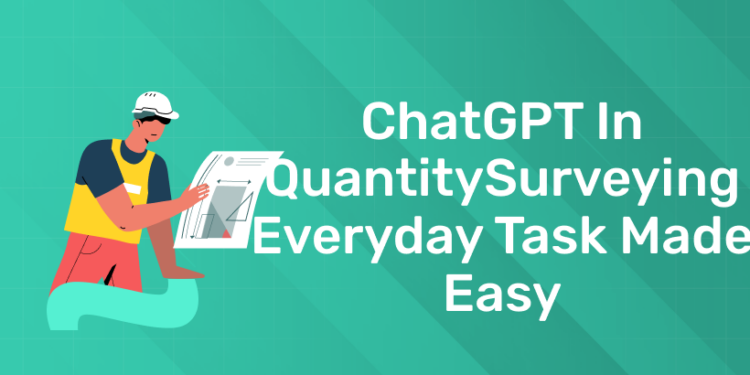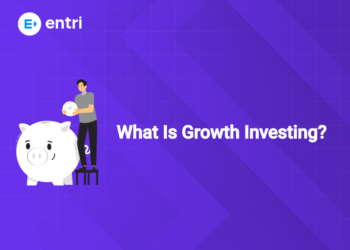Table of Contents
Quantity surveying, a critical facet of construction and project management, demands precision and efficiency. In this era of technological advancement, emerging tools like ChatGPT are transforming the landscape of various professions, including quantity surveying. This blog explores how incorporating ChatGPT into everyday tasks can simplify processes, enhance productivity, and offer valuable insights for quantity surveyors. In the intricate realm of construction and project management, precision and efficiency are the keystones to success. The advent of this digital era has ushered in a wave of technological advancements, with emerging tools like ChatGPT at the forefront of transformation.Accurate cost estimations, effective contract administration, and proactive risk management are just a few facets of their multifaceted responsibilities.
This blog embarks on a journey to explore the profound impact of integrating ChatGPT into the daily tasks of quantity surveyors. As we delve into this exploration, we aim to unravel how ChatGPT, with its natural language processing capabilities, has the potential to simplify complex processes, elevate productivity, and provide invaluable insights for professionals in the field of quantity surveying. Quantity surveying stands as a linchpin in the intricate tapestry of construction and project management. Charged with the responsibility of meticulously managing costs, contracts, and resources, quantity surveyors play a vital role in ensuring the financial viability and success of construction projects. In a discipline where precision is paramount, the demands placed on quantity surveyors are significant.
Start Your Journey To A Prosperous Career ! Study Quantity Surveying With Professional Mentors!
ChatGPT in Quantity Surveying: Understanding
1: What is the main purpose of a Bill of Quantities (BoQ)?
ChatGPT, an advanced language model developed by OpenAI, represents a groundbreaking milestone in natural language processing (NLP) technology. It is part of the GPT (Generative Pre-trained Transformer) family of models and stands out for its ability to generate coherent and contextually relevant text based on input prompts. Unlike its predecessors, ChatGPT is designed to engage in dynamic and interactive conversations, making it particularly well-suited for applications that involve natural language understanding and generation. At its core, ChatGPT employs a transformer architecture, allowing it to grasp intricate patterns, understand context, and generate human-like responses. Trained on diverse datasets, ChatGPT has acquired a versatile understanding of language, enabling it to respond to a wide array of queries and prompts.
Capabilities and Applications:
- Natural Language Understanding: ChatGPT excels in comprehending the nuances of human language. It can interpret queries, understand context, and generate contextually relevant responses, making it a powerful tool for interactive communication.
- Text Generation and Completion: The model has the ability to generate coherent and contextually appropriate text based on the input it receives. This makes ChatGPT valuable for tasks such as content creation, completion of sentences, and formulating responses to various prompts.
- Adaptability to User Prompts: Users can provide prompts or queries to ChatGPT, and the model responds by generating text that aligns with the context provided. This adaptability lends itself to a myriad of applications across different domains.
- Interactive Conversations: Unlike traditional language models, ChatGPT is designed to engage in dynamic and interactive conversations. It can maintain context across multiple turns, allowing for more natural and human-like interactions.
Potential Impact on Quantity Surveying Tasks:
The incorporation of ChatGPT into quantity surveying holds substantial promise for transforming the way professionals in this field approach various tasks.
- Precise Query Handling: ChatGPT’s natural language understanding capabilities make it adept at handling queries related to cost estimations, project details, and other quantitative aspects. Quantity surveyors can interact with ChatGPT to seek specific information or insights.
- Documentation Assistance: ChatGPT can assist quantity surveyors in generating clear and concise documentation. Whether it’s preparing reports, project summaries, or communication materials, ChatGPT can contribute to the efficient creation of written content.
- Contextual Project Understanding: By providing project-specific prompts, quantity surveyors can leverage ChatGPT to gain insights into contextual project details. This can enhance the model’s understanding of unique project requirements and aid in more accurate and tailored responses.
- Real-time Collaboration: ChatGPT’s interactive conversation capabilities enable real-time collaboration. Quantity surveyors can engage with the model to discuss project-related queries, analyze potential cost-saving measures, and seek insights on various aspects of construction projects.
As we delve deeper into the blog, the focus will shift towards practical examples, tips for effective utilization, and an exploration of the ways in which ChatGPT can seamlessly integrate into the daily workflows of quantity surveyors, unlocking new dimensions of efficiency and effectiveness in their tasks.
Master Quantity Surveying – Build a Rewarding Career Today!
Gain in-demand skills in cost estimation, project budgeting, and contract management with our Quantity Surveying Course. Learn from industry experts and boost your career in construction and infrastructure. Enroll now and take the first step toward success!
Know MoreChatGPT in Quantity Surveying: Enhancing Accuracy
ChatGPT’s natural language processing (NLP) capabilities offer a revolutionary approach to enhancing accuracy in cost estimations within the realm of quantity surveying. The model’s ability to comprehend and generate human-like text allows it to engage in dynamic conversations, making it a valuable tool for navigating the complexities of cost-related queries. By leveraging ChatGPT, quantity surveyors can input detailed project specifications or cost-related questions in natural language. The model, in turn, interprets these inputs, discerns contextual nuances, and provides detailed responses with a level of accuracy that aligns with the intricacies of the construction industry.
Examples of ChatGPT’s Ability to Handle Cost-Related Queries:
- Detailed Material Cost Breakdown: User Input: “Break down the material costs for constructing a residential building with a floor area of 2,000 square feet.” ChatGPT Response: “For a residential building of 2,000 square feet, the material costs can be estimated as follows: X amount for foundation materials, Y amount for structural elements, and Z amount for finishing materials.”
- Labor Cost Analysis: User Input: “What factors should be considered for estimating labor costs in a commercial construction project?” ChatGPT Response: “Factors influencing labor costs include project complexity, skilled labor availability, and union agreements. Additionally, considering the geographical location and market rates is crucial for accurate labor cost estimations.”
- Project-Specific Queries: User Input: “How would changes in project scope impact the overall cost estimation for a renovation project?” ChatGPT Response: “Changes in project scope can have varied impacts on costs. Depending on the nature of changes, additional materials, labor, and time may be required, potentially leading to an adjusted cost estimate. Factors like project phase and contractual agreements also play a role.”
Improving Communication and Documentation
Effective communication is a cornerstone of successful quantity surveying, and ChatGPT proves to be an asset in streamlining interactions with clients and contractors. The model can facilitate clear and coherent communication by generating responses to inquiries, clarifying project details, and providing updates in a natural language format.
- Client Queries: Client Inquiry: “Can you explain the budget breakdown for the upcoming construction phase?” ChatGPT Response: “Certainly! The budget breakdown for the upcoming construction phase includes X amount for materials, Y amount for labor, and Z amount for overhead costs. This distribution aligns with the project specifications and overall budget allocation.”
- Contractor Communication: Contractor Query: “Are there any specific considerations for the installation of specialized equipment in the construction process?” ChatGPT Response: “The installation of specialized equipment requires careful coordination with the project timeline, potential adjustments in labor allocation, and adherence to safety regulations. It’s crucial to factor in these considerations for a seamless integration of specialized equipment.”
The Role of ChatGPT in Maintainin Project Documentation:
Project documentation is a meticulous aspect of quantity surveying, and ChatGPT contributes to its enhancement by generating clear and comprehensive written content. The model can assist in the creation of project reports, summaries, and documentation that encapsulate various details, from cost breakdowns to project milestones.
- Project Reports: User Input: “Generate a detailed report summarizing the cost variations between the initial budget and the current project expenditures.” ChatGPT Response: “In the current project phase, there have been variations in costs primarily due to unforeseen site conditions. The initial budget allocated X amount, whereas the current expenditures reflect Y amount. A detailed breakdown of these variations is provided in the attached report.”
- Milestone Updates: User Input: “Compose a communication update for clients highlighting the achievement of key project milestones.” ChatGPT Response: “Dear clients, I am pleased to inform you that we have successfully achieved key milestones in the project timeline, including completion of foundation work and commencement of structural elements. Attached is a detailed update with visuals illustrating our progress.”
Incorporating ChatGPT into communication and documentation processes not only enhances clarity but also provides quantity surveyors with a tool for efficiently managing the narrative of a construction project. This improved communication can contribute to better understanding, transparency, and collaboration among stakeholders. As we progress through the blog, we will further explore real-world applications, tips for effective integration, and the overall impact of ChatGPT on the efficiency and effectiveness of quantity surveying practices.
ChatGPT in Quantity Surveying: Effective Integration
Effective Integration
- Understanding Model Capabilities: Before integration, quantity surveyors should have a clear understanding of ChatGPT’s capabilities and limitations. Knowing what types of queries and tasks the model excels at ensures its effective and targeted use.
- Identifying Suitable Tasks for Automation: Not all tasks may benefit equally from ChatGPT. Quantity surveyors should identify tasks that align with the model’s strengths, such as answering queries, generating documentation, and providing insights on cost-related matters.
- Adapting Workflows Gradually: Instead of a sudden overhaul, gradually integrate ChatGPT into existing workflows. Start with less critical tasks, allowing quantity surveyors to become familiar with the tool’s functionalities without disrupting essential processes.
- Customizing Prompts for Specific Needs: ChatGPT’s responsiveness to prompts allows for customization. Quantity surveyors can experiment with various prompts tailored to their specific needs, ensuring more accurate and relevant responses.
- Feedback Loop for Model Refinement: Establish a feedback loop for continuous improvement. Encourage users to provide feedback on the model’s responses, enabling refinement and adaptation to the specific requirements of quantity surveying tasks.
Highlighting Potential Challenges and Providing Solutions:
- Ambiguity in Queries: Challenge: Ambiguous or vague queries may lead to inaccurate responses. Solution: Clearly articulate queries, providing sufficient context to ensure ChatGPT’s accurate interpretation. Reframe ambiguous queries for more precise results.
- Overreliance on Historical Data: Challenge: ChatGPT’s responses may be influenced by the data it was trained on, potentially perpetuating biases or outdated information. Solution: Cross-verify ChatGPT’s responses with current industry standards and project-specific data. Use the model as a supplementary tool, not a sole source of information.
- Resistance to Change: Challenge: Resistance from team members accustomed to traditional workflows. Solution: Implement effective change management strategies, including training sessions, workshops, and highlighting the benefits of ChatGPT to gain buy-in from team members.
- Handling Complex or Technical Queries: Challenge: ChatGPT may struggle with highly technical or nuanced queries. Solution: For intricate queries, leverage ChatGPT for initial insights and supplement with manual review by experienced quantity surveyors to ensure accuracy.
Ensuring Data Security and Privacy
- Data Encryption and Transmission: Utilize secure and encrypted channels for transmitting data to and from ChatGPT. Implement industry-standard encryption protocols to safeguard sensitive project information during communication with the model.
- Secure Hosting and Storage: Choose reputable and secure platforms for hosting and storing data utilized in conjunction with ChatGPT. Ensure that these platforms adhere to robust security measures and compliance standards.
- Access Control Mechanisms: Implement stringent access control mechanisms to restrict and monitor access to data processed by ChatGPT. Only authorized personnel should have access to project-related information, minimizing the risk of unauthorized exposure.
- Regular Security Audits: Conduct regular security audits to identify and address potential vulnerabilities. This includes assessing the security measures of both ChatGPT integration platforms and the overall quantity surveying infrastructure.
Best Practices and Tools
- Confidentiality Agreements: Formalize confidentiality agreements with service providers or platforms hosting ChatGPT. Clearly define the terms of data usage, storage, and protection to ensure compliance with confidentiality requirements.
- Secure Collaboration Platforms: Utilize secure collaboration platforms that adhere to industry standards for data protection. Platforms should offer features such as end-to-end encryption and secure file sharing to maintain confidentiality during collaborative efforts.
- Privacy-Preserving Techniques: Explore privacy-preserving techniques that allow quantity surveyors to extract valuable insights from ChatGPT without compromising sensitive information. Techniques such as federated learning or on-device processing can be considered.
- Continuous Monitoring and Compliance: Establish a continuous monitoring system for data security and compliance. Regularly review and update security protocols to align with evolving industry standards and legal requirements.
ChatGPT in Quantity Surveying: Overcoming Challenges
- Understanding Technical Jargon: Challenge: Quantity surveying involves a specialized vocabulary and technical jargon. ChatGPT, while proficient in natural language understanding, may initially struggle with the intricacies of construction and project management terminology.
- Handling Project-Specific Nuances: Challenge: Projects vary widely in scope, requirements, and intricacies. ChatGPT may encounter challenges in adapting to project-specific nuances, leading to responses that may lack precision.
- Integration into Existing Workflows: Challenge: Incorporating a new technology like ChatGPT into established workflows can face resistance. Quantity surveyors may find it challenging to seamlessly integrate the tool without disrupting their usual processes.
- Ensuring Data Accuracy: Challenge: Quantity surveying requires accurate and reliable data. If ChatGPT relies on outdated or inaccurate information during its training phase, it may generate responses that do not align with current industry standards.
Strategies and Solutions:
- Specialized Training for Technical Jargon: To overcome the challenge of technical jargon, quantity surveyors can provide ChatGPT with specialized training data that includes construction-specific terms and industry-specific nuances. This targeted training helps the model better understand and generate accurate responses in the context of quantity surveying.
- Project-Specific Customization: Quantity surveyors can enhance ChatGPT’s adaptability by customizing prompts with project-specific details. This involves inputting information about the project’s unique requirements, ensuring more precise and tailored responses that align with the intricacies of each construction project.
- Gradual Integration with Training Sessions: Instead of a sudden integration, quantity surveyors can conduct training sessions to familiarize team members with ChatGPT’s functionalities. Starting with pilot projects or less critical tasks allows for a gradual integration, minimizing disruption and promoting a smoother transition.
- Regular Updates and Data Validation: To ensure data accuracy, quantity surveyors should regularly update ChatGPT with the latest industry standards, project data, and cost variables. Implementing a system for data validation helps maintain the model’s relevance and reliability in generating responses aligned with current construction practices.
By implementing these strategies, quantity surveyors can effectively overcome the challenges associated with incorporating ChatGPT into their daily tasks. This proactive approach ensures a more seamless integration, maximizes the benefits of ChatGPT, and enhances the overall efficiency of quantity surveying practices.
Master Quantity Surveying – Build a Rewarding Career Today!
Gain in-demand skills in cost estimation, project budgeting, and contract management with our Quantity Surveying Course. Learn from industry experts and boost your career in construction and infrastructure. Enroll now and take the first step toward success!
Know MoreChatGPT in Quantity Surveying: Future Possibilities
- Enhanced Contextual Understanding: Future iterations of ChatGPT may feature improved contextual understanding, allowing the model to grasp even more nuanced project-specific details. This advancement could significantly enhance its ability to provide precise and tailored responses to complex quantity surveying queries.
- Integration with Advanced Tools: ChatGPT could evolve to seamlessly integrate with advanced tools used in quantity surveying, such as Building Information Modeling (BIM) software. This integration may allow for a more holistic approach, combining ChatGPT’s language processing capabilities with the detailed visual and data-rich information provided by BIM.
- Real-time Collaboration and Feedback: The future may see ChatGPT evolving into a more interactive tool for real-time collaboration. Quantity surveyors could engage in dynamic conversations with the model, receiving instant insights and feedback, thereby accelerating decision-making processes.
- Domain-Specific Customization: Future developments might enable users to customize ChatGPT for specific domains, tailoring the model to the unique requirements of quantity surveying. This could involve specialized training on industry-specific terminology, regulations, and cost estimation methodologies.
The Evolving Role
- Efficiency and Time Savings: As ChatGPT continues to evolve, its integration into quantity surveying practices holds the promise of significantly reducing the time required for routine tasks. The model’s ability to generate quick and accurate responses can lead to streamlined workflows, allowing quantity surveyors to focus on more strategic aspects of project management.
- Advanced Predictive Analysis: Future versions of ChatGPT may incorporate advanced predictive analysis capabilities. This could empower quantity surveyors with insights into potential cost variations, risks, and optimizations, enabling proactive decision-making and minimizing the impact of unforeseen challenges.
- Collaboration with AI-Enhanced Tools: The synergy between ChatGPT and other AI-enhanced tools may redefine collaborative efforts in quantity surveying. Enhanced communication between models, combined with the ability to process vast amounts of data, could result in more accurate cost estimations and better-informed decision-making.
- Continuous Learning and Adaptability: The future of ChatGPT in quantity surveying may involve continuous learning mechanisms. The model could adapt to evolving industry standards, regulations, and technological advancements, ensuring that it remains a reliable and up-to-date resource for quantity surveyors.
Start Your Journey To A Prosperous Career ! Study Quantity Surveying With Professional Mentors!
Conclusion
The future of ChatGPT in quantity surveying holds exciting possibilities, ranging from improved contextual understanding and real-time collaboration to advanced predictive analysis. As the model evolves and integrates with cutting-edge technologies, it is poised to play a pivotal role in shaping the efficiency, accuracy, and adaptability of quantity surveying practices in the years to come. Looking forward, the future possibilities outlined in the blog open doors to enhanced contextual understanding, collaboration with advanced tools, and continuous learning mechanisms.
As quantity surveyors stand on the brink of this technological evolution, the call to action is clear – explore, experiment, and embrace the potential of ChatGPT. In embracing this technological evolution, quantity surveyors are not just adopting a tool; they are redefining the future of their profession. The commitment to staying abreast of technological advancements, addressing challenges, and proactively leveraging the capabilities of ChatGPT positions quantity surveyors at the forefront of innovation in the construction and project management realm. The journey ahead holds exciting prospects for those who dare to integrate, learn, and harness the full potential of ChatGPT in the evolving landscape of quantity surveying.























